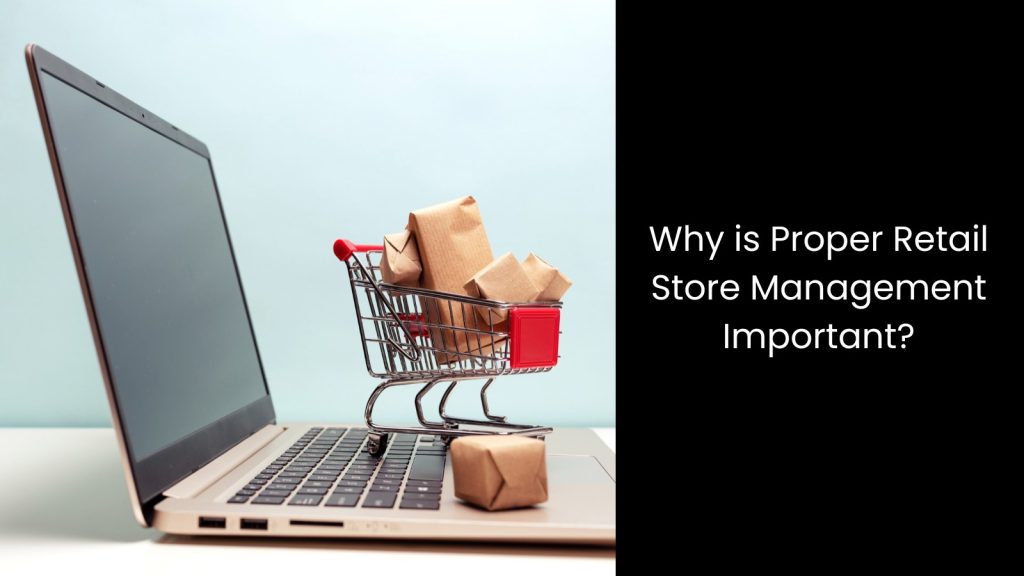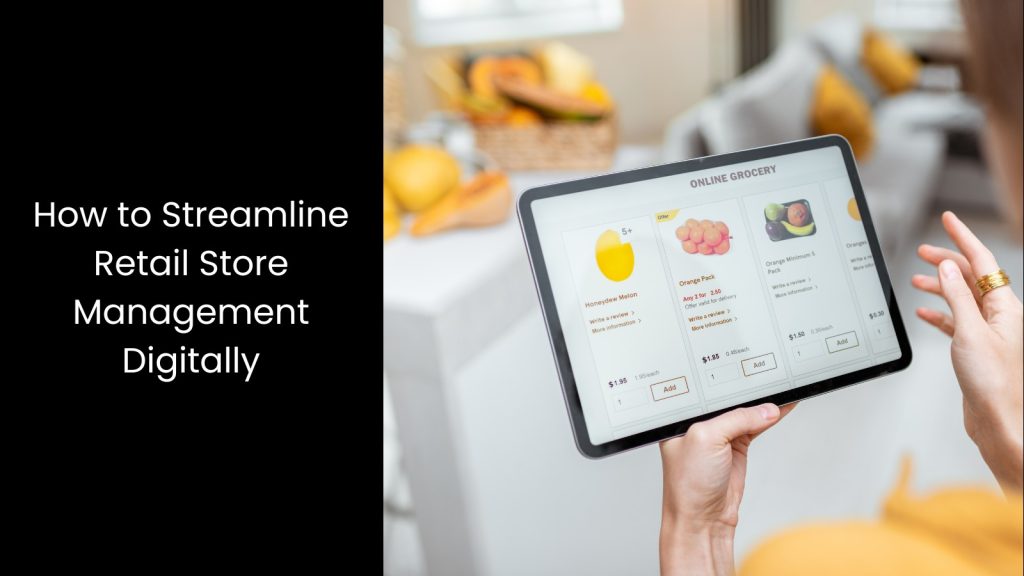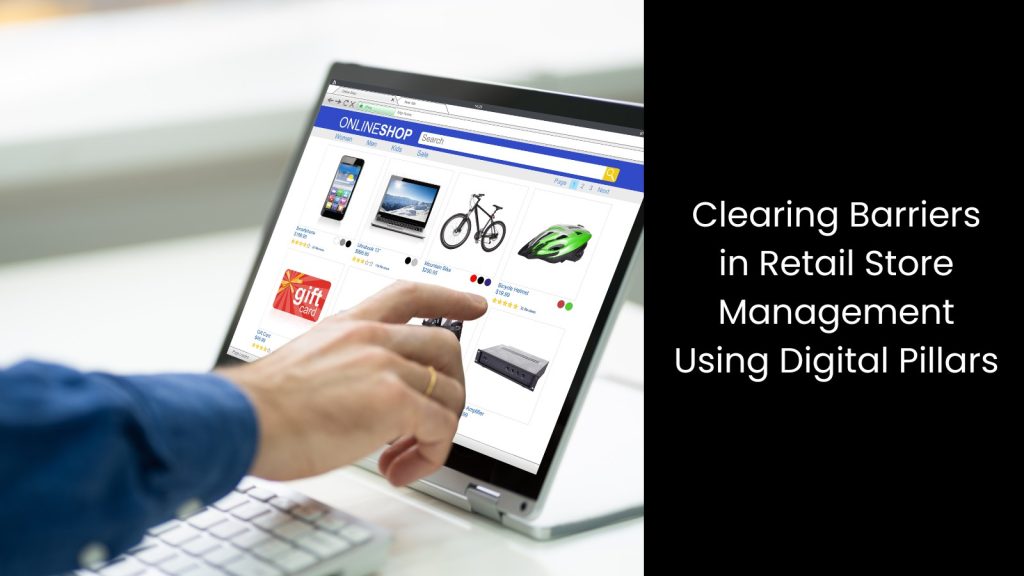With over 22,000 retail establishments in Singapore, the retail industry remains a vital part of the country’s economy. However, managing a retail store in today’s digital world comes with its own set of challenges. From keeping up with customer expectations to managing inventory and ensuring smooth operations, retailers in Singapore are increasingly turning to digital solutions to stay competitive. The rise of e-commerce and omnichannel shopping experiences has pushed many businesses to streamline their retail store management processes through technology.
This article explores how you can streamline your retail store management responsibilities using digital tools.
We will know
Why is Proper Retail Store Management Important?

- If you are a retailer in the Singaporean market, it is obvious if you wonder how to control a retail store. Proper retail store management is what makes your business success stand out from the crowd.
- Proper retail store management ensures that the store runs smoothly, keeps customers satisfied, and ultimately drives sales and profits. However, this is not easy. Retail store management involves overseeing every aspect of the store, from inventory control and staff management to customer service and sales strategy.
- When a retailer uses effective management techniques, they can keep inventory levels in check, ensuring that shelves are well-stocked with the right products while avoiding overstocking, which ties up capital. It also ensures that employees are well-trained, motivated, and scheduled efficiently to meet customer demand without unnecessary labour costs. When a store is well managed, customers receive better service, which improves their shopping experience and builds loyalty. Happy customers are more likely to return, recommend the store to others, and increase their spending.
- The most important part is that strong retail store management enhances sales performance by ensuring that products are displayed attractively and promotions are run effectively, drawing more customers in. It also helps to analyse sales data, giving managers insights into consumer trends and helping them make informed decisions about what products to stock and which marketing strategies to pursue.
- Therefore, managing a retail store efficiently not only ensures the day-to-day operations run smoothly but also plays a crucial role in the store’s long-term growth and success.
How to Streamline Retail Store Management Digitally

Adopting Omnichannel Retail Solutions
This integrates physical and digital sales channels into one unified system.
This approach offers customers a seamless shopping experience, whether they shop in-store, online, or through a mobile app. Combining physical and digital sales channels provides customers with a seamless shopping experience. It allows real-time synchronisation of inventory and orders across platforms.
With this capacity in hand, retailers can track sales, stock levels, and customer orders in real-time, which eliminates the guesswork and ensures that products are available when and where customers want them. For example, if a customer purchases an item online, the system automatically updates inventory levels across all platforms, preventing stockouts and overstocking. This helps reduce costs associated with managing excess inventory and lost sales due to stockouts.
Omnichannel retail also enhances customer satisfaction by giving them multiple ways to engage with the store, such as buying online and picking up in-store or returning online purchases at a physical location. This flexibility makes it easier for customers to interact with the brand, driving loyalty and repeat business.
Going with Mobile Store Management
When everything comes through mobile, why not retail store management?
This is exactly why Singaporean retailers started moving towards mobile applications for their retail management initiatives.
It gives store managers the ability to oversee key operations from anywhere, at any time.
Mobile solutions allow store managers to monitor sales, stock levels, and employee performance remotely, enhancing operational flexibility and on-the-go management. With mobile store management, managers no longer need to be physically present in the store to stay updated on day-to-day activities. Instead, they can access real-time data on sales performance, check inventory levels, and even see how well employees are performing through their smartphones or tablets. This flexibility ensures that store managers can make timely decisions even when they are away, which keeps the business running smoothly without interruptions.
For example, if stock is running low on a popular item, managers can immediately initiate restocking or allocate available inventory from another store, all from their mobile devices. It also helps them stay on top of staff scheduling and performance, allowing adjustments to be made to meet customer demand without having to be on-site. Mobile store management also improves communication with employees, enabling quick updates and instructions to be sent instantly.
Utilising Self-Checkout Technology
Retail stores have embraced self-checkout technology because it enhances efficiency and improves the customer experience.
Self-checkout kiosks reduce wait times and improve the shopping experience while freeing up staff to focus on other tasks within the store. In a fast-paced world where customers expect quick service, long checkout lines can lead to frustration and lost sales. Self-checkout systems solve this problem by allowing customers to scan, bag, and pay for their items themselves, speeding up the process and reducing the time spent waiting in line.
This digital solution caters to customers who prefer a more independent shopping experience, letting them control the pace of their checkout. For stores, self-checkout reduces the need for multiple cashiers, which lowers labour costs and allows staff to focus on other important areas like stocking shelves, assisting customers, or managing inventory. It also helps to handle surges in customer traffic, such as during peak shopping hours or seasonal sales, without needing to hire additional staff. The convenience of self-checkout technology appeals to both customers and retailers, creating a win-win situation.
Using Retail Analytics Tools
This technological platform provides valuable data that helps retailers understand their business better and make smarter decisions.
These platforms offer insights into sales trends, customer behaviours, and product performance, enabling data-driven decisions for product placements and promotions. When analysing this data, store managers can see which products are selling well and which are not, allowing them to optimise inventory and avoid stockouts or overstocking.
They can also spot trends in customer preferences, helping them tailor their product offerings to meet demand. Also, understanding customer behaviour through analytics helps retailers enhance the shopping experience. They can use this data to personalise promotions and offer targeted discounts that appeal to specific customer segments, driving sales and building customer loyalty.
They also enhance operations by helping managers plan for busy periods, adjust staffing levels, and manage inventory more effectively, which reduces waste and increases efficiency. Further, data from retail analytics tools can inform decisions about store layout and product placement, ensuring that high-demand items are positioned strategically to maximise sales.
Implementing Warehouse Management Software
Last but not least, implementing warehouse management software (WMS) makes retail store management digitally easy by providing retailers with better control over their inventory and improving the overall supply chain.
Using WMS helps retailers optimise inventory control, track stock levels in real time, and streamline order fulfilment, improving supply chain efficiency all under one screen. With WMS, retailers can easily monitor stock levels across multiple locations, ensuring that products are always available when customers need them and reducing the risk of stockouts or overstocking.
The real-time tracking feature allows managers to know exactly what items are in the warehouse, which are being transferred to stores, and what is in transit. This level of visibility enables better decision-making, allowing managers to reorder stock more efficiently and ensure that popular items are always in stock.
WMS also plays a central role in streamlining order fulfilment by automating processes like picking, packing, and shipping, which speeds up the entire order cycle. Faster fulfilment times mean that customers receive their orders more quickly, which enhances their overall shopping experience and increases satisfaction. On the other hand, using WMS reduces the chances of errors in order processing, as the system accurately tracks items from the moment they arrive in the warehouse until they reach the customer or store shelf. This accuracy minimises costly mistakes such as shipping the wrong products or misplacing inventory.
If you opt for a robust WMS, it also helps reduce labour costs by automating many tasks that would otherwise require manual input, allowing store staff to focus on other important areas like customer service or sales. In today’s competitive retail landscape, implementing a robust warehouse management system ensures that retailers can keep up with demand, optimise inventory management, and provide a seamless shopping experience, both in-store and online.
Clearing Barriers in Retail Store Management Using Digital Pillars

The retail industry is not a place that offers a silk route for the entrepreneurs in Singapore to walk down. It consists of many challenges, yet they all can be defeated if you fight with them using the right weapons. In the case of retail store management, integrating technologies that simplify processes is an outstanding movement. The right tools not only streamline the business but also create stronger connections with customers. In this rapidly evolving retail landscape, investing in the right digital solutions from a reputed partner is the key to long-term success and sustainable growth.

